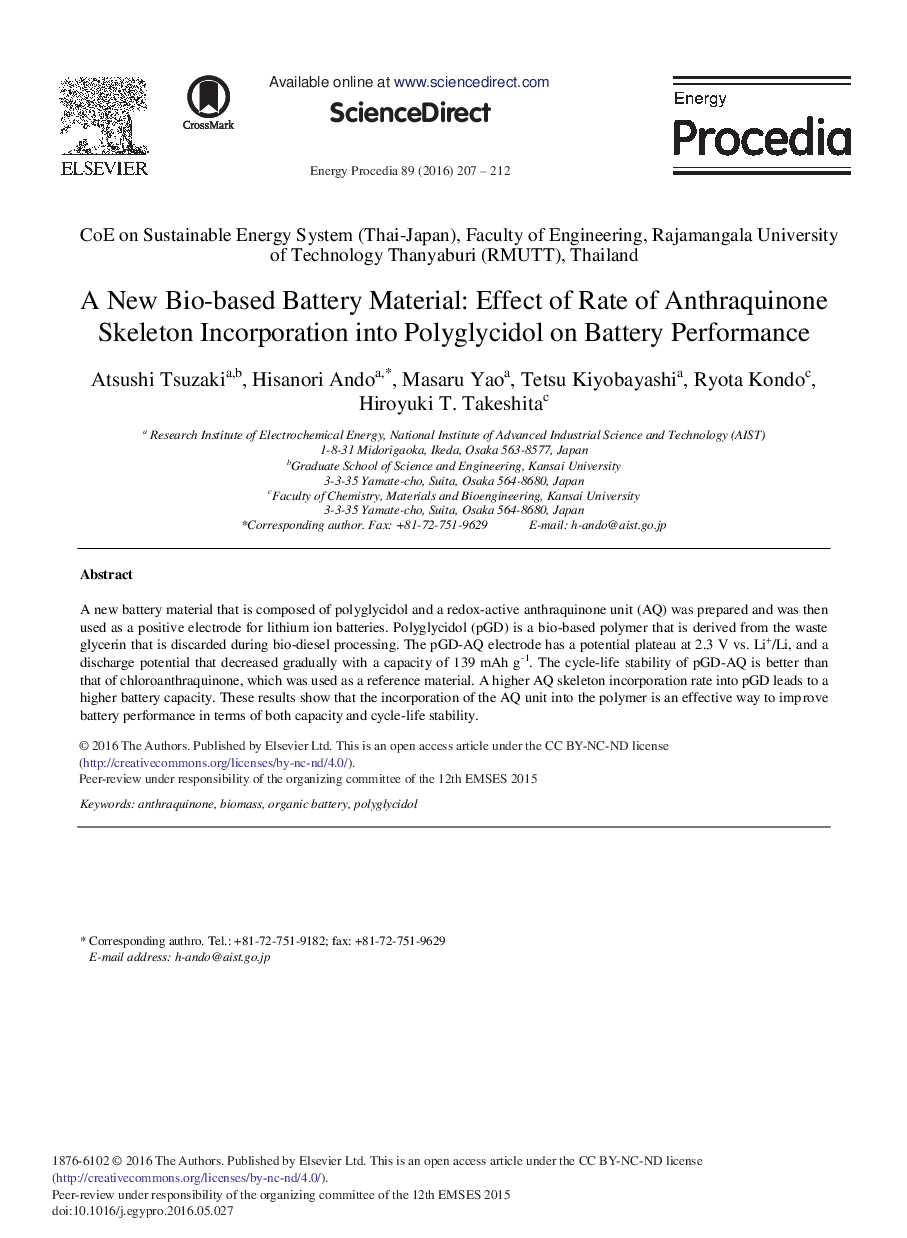| Article ID | Journal | Published Year | Pages | File Type |
|---|---|---|---|---|
| 1508743 | Energy Procedia | 2016 | 6 Pages |
A new battery material that is composed of polyglycidol and a redox-active anthraquinone unit (AQ) was prepared and was then used as a positive electrode for lithium ion batteries. Polyglycidol (pGD) is a bio-based polymer that is derived from the waste glycerin that is discarded during bio-diesel processing. The pGD-AQ electrode has a potential plateau at 2.3 V vs. Li+/Li, and a discharge potential that decreased gradually with a capacity of 139 mAh g-1. The cycle-life stability of pGD-AQ is better than that of chloroanthraquinone, which was used as a reference material. A higher AQ skeleton incorporation rate into pGD leads to a higher battery capacity. These results show that the incorporation of the AQ unit into the polymer is an effective way to improve battery performance in terms of both capacity and cycle-life stability.
